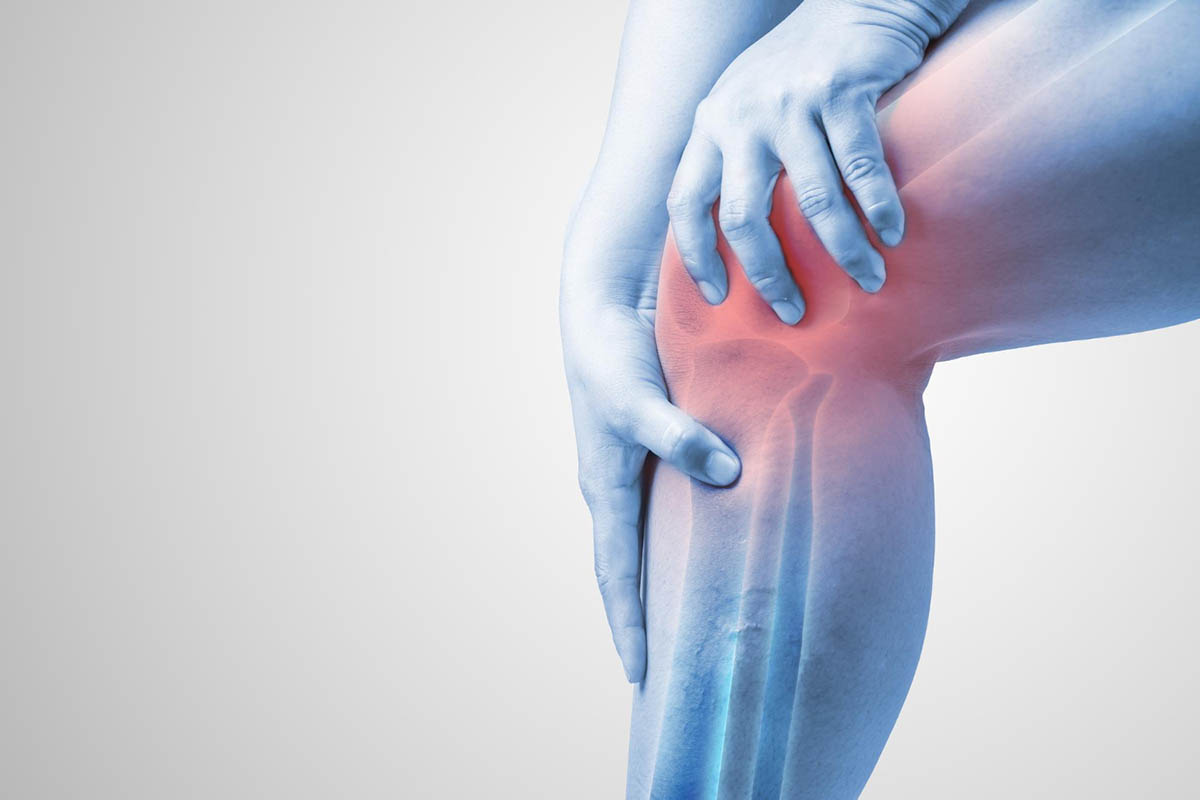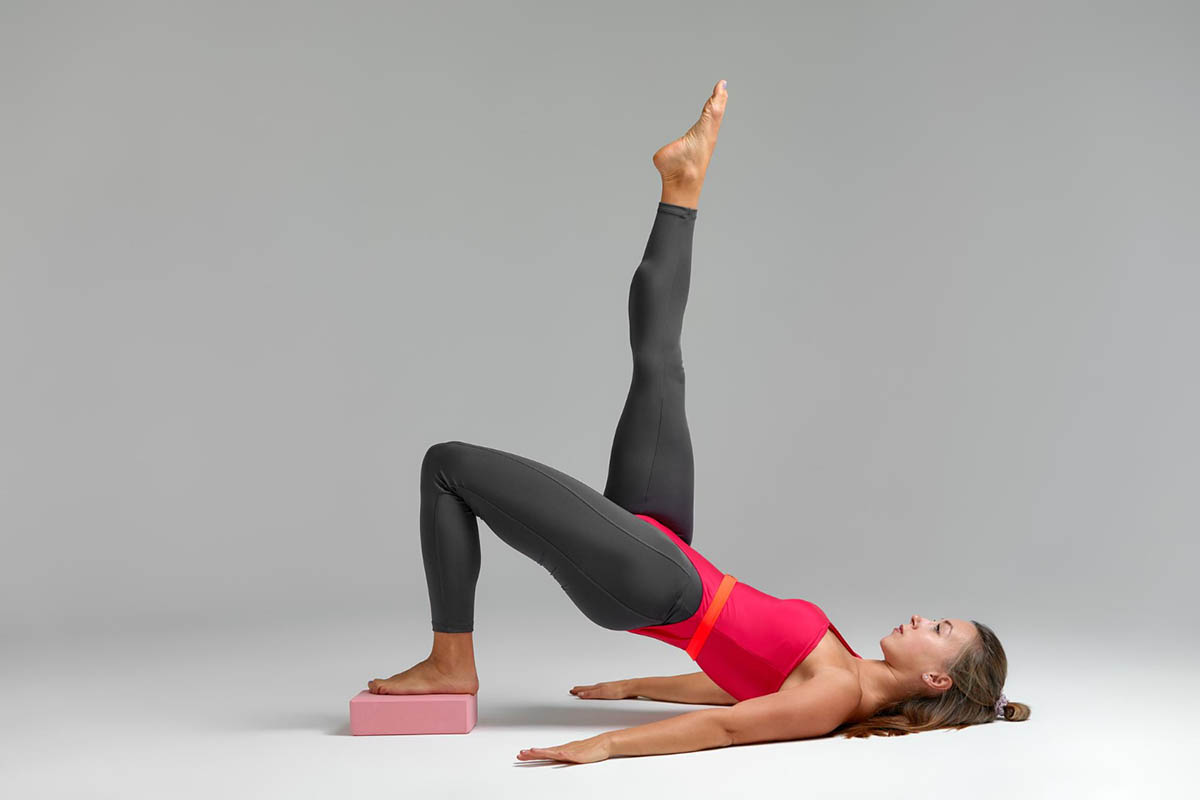Knee pain is a common issue that affects people of all ages, often resulting in discomfort during everyday activities like walking, climbing stairs, or even sitting. While injuries, osteoarthritis of the knee, and joint degeneration are common causes, tight hamstrings are often an overlooked source of knee discomfort. Tight hamstrings knee pain occurs when the hamstring muscles—located behind the thighs—become tense and exert pressure on the knees. In this blog, we will explore how tight hamstrings can lead to knee pain, and provide practical tips on pain prevention and relief through proper stretching, body awareness, and mobility exercises.
What is a Hamstring?
The hamstrings are a group of three muscles located at the back of the thigh, extending from the lower part of the pelvis to the lower leg just above the calf, crossing both the hip and knee joints. These muscles play a significant role in leg movements like bending the knee, extending the hip, and stabilizing the pelvis during standing or walking. Healthy, flexible hamstrings allow smooth movement in the knees, hips, and lower back. However, when these muscles are tight or weak, they pull on the surrounding joints, causing discomfort and instability.
How Tight Hamstrings Affect the Knee
Can tight hamstrings cause knee pain? Absolutely. Tight hamstrings can disrupt the natural mechanics of the knee, leading to misalignment and strain. When hamstrings are inflexible or tight, they limit the range of motion in the legs, increasing the tension on the muscles and tendons around the knee. This tension creates a tight muscle behind and in front of the knee, which often manifests as pain, stiffness, or swelling. Tight hamstrings also contribute to knee instability, which can increase the risk of injury, like ligament tears or chronic conditions such as patellofemoral pain syndrome.
Strengthening the hamstrings has been shown to improve the functionality of knees with deficiencies. This is likely because increasing both hamstring and quadricep strength, as well as improving the hamstring-to-quadricep (H:Q) ratio, helps to reduce the risk of anterior-lateral subluxation of the tibia, which can contribute to knee instability.
When the hamstrings are tight, they can also tilt the pelvis backward, creating a pelvic tilt that further contributes to abnormal movement patterns of the lower leg. Additionally, the lower back muscles and quadricep muscles are often affected, leading to lower back mobility issues and pain. This combination of muscular imbalance, restricted motion, and misalignment can significantly impact the knees, resulting in knee pain from tight hamstrings.
Common Causes of Tight Hamstrings Knee Pain
Several factors contribute to tight hamstrings knee pain, many of which stem from modern lifestyles or physical activity patterns. Here are some of the most common causes:
Sitting a lot
Prolonged sitting, often associated with office work or sedentary lifestyles, causes the hamstrings to remain in a shortened position for extended periods. When sitting, the hamstrings are contracted, and over time, this can lead to chronic tightness. People who sit for long hours without breaks may experience muscular imbalance in the legs, affecting their daily activities and contributing to knee discomfort.
Intense activity
Participating in intense forms of exercise like sprinting, cycling, or high-impact sports involving running, without proper warm-ups or dynamic hamstring stretches can lead to exercise shock in the hamstrings. The sudden demand placed on the muscles without proper preparation can cause them to tighten, leading to joint and muscle pain. Athletes or those who exercise heavily may develop muscle tears if they neglect hamstring flexibility routines, increasing the risk of weight-bearing difficulty and ligament tears.
Long periods of inactivity before activity
Jumping straight into physical activity after long periods of inactivity is another leading cause of tight hamstrings. Going from rest to sudden movement can strain the hamstring muscles, contributing to tightness and pain. This sudden transition can also trigger nerve issues, such as sciatica, which causes a pins-and-needles sensation and radiating pain down the leg.
Weak muscles
Weak hamstring muscles are more prone to tightness because they struggle to keep up with the demands placed on them during movement. Weakness in the hip stabilizers, quads, and hamstrings can lead to overcompensation by the surrounding muscles, such as the quadricep muscles or lower back muscles, resulting in overall instability in the legs and knee instability.
Lack of flexibility
A lack of hamstring flexibility can directly affect the knees by restricting movement, particularly in activities like walking, running, or squatting. Without sufficient flexibility, the hamstrings cannot adequately support the legs, leading to tension that pulls on the knees, creating pain and discomfort over time.
A recent study revealed that 55.5% of participants (152 out of 274) exhibited tight hamstrings. It was also noted that hamstring tightness tends to increase with age, highlighting the importance of maintaining flexibility as we grow older.
Symptoms of Knee Pain Caused by Tight Hamstrings

Symptoms of knee pain from tight hamstrings can range from mild discomfort to significant pain that affects daily activities. Common symptoms include:
- Pain behind the knee: Often a tightness or pins-and-needles sensation caused by the pulling of the hamstrings.
- Stiffness in the leg: Difficulty bending or straightening the leg fully, often leading to compensatory movements that worsen the pain.
- Reduced flexibility: Inability to perform certain movements like bending forward or touching your toes due to tight hamstrings.
- Knee instability: A feeling of weakness or wobbling in the knee joint when standing or walking.
- Pain when sitting or standing for long periods: Prolonged inactivity can exacerbate tightness, resulting in pain when standing after sitting for an extended time.
Knee pain is a widespread issue, affecting about 25% of adults. Its prevalence has surged by nearly 65% over the last two decades, making it an increasingly common health concern.
How to Check if You Have Tight Hamstrings
There are a few simple ways to test whether your hamstrings are tight. One of the most effective tests is the straight-leg raise:
- Lie on your back with one leg bent and the other straight.
- Straighten the leg and lift it while keeping the other knee bent for thigh support.
- Aim to raise the leg to a 90-degree angle. If you feel tightness before reaching that perpendicular angle, your hamstrings are likely tight and stiff.
In addition, you can try a seated or standing hamstring stretch to check your flexibility:
- For the seated test, sit with your back straight and legs extended. Reach toward your toes. If you cannot comfortably reach forward without bending your knees or straining, your hamstrings may be tight.
Treatment Options for Tight Hamstrings Knee Pain
For those suffering from tight hamstrings knee pain, there are several at-home treatment options and professional interventions that can help reduce discomfort and improve flexibility. Here are a few effective treatments:
Physical Therapy
Physical therapy is a highly effective approach to addressing knee pain caused by tight hamstrings and other muscular imbalances. It focuses on improving mobility, strength, and flexibility through various techniques tailored to individual needs. Physical therapy helps restore function to the knee by directly targeting the underlying causes of discomfort, such as tight hamstrings, through specific exercises and manual techniques.
At Austin Manual Therapy, we specialize in addressing complex musculoskeletal issues, including pain in knee caused by tight hamstrings, muscular imbalances, and joint instability. Our expert team offers personalized physical therapy in Austin, focused on restoring knee function through manual therapy techniques, therapeutic exercises, and comprehensive treatment plans. Whether you’re dealing with chronic knee discomfort or recovering from injury, we help you regain mobility, alleviate pain, and improve overall joint health to enhance your quality of life. Let us help you get back to doing what you love, pain-free.
Manual Therapy
Manual therapy involves hands-on techniques used by physical therapists to mobilize joints and soft tissues of the low back, hips, knees, ankles, and feet. For knee pain caused by tight hamstrings, manual therapy can help improve flexibility, reduce stiffness, and alleviate tension. Techniques like soft tissue mobilization and joint manipulation can enhance range of motion in the knee and hamstrings, promoting better movement and function.
Therapeutic Exercises
Therapeutic exercises are crucial for addressing tight hamstrings knee pain. These exercises are designed to improve strength, flexibility, and mobility in the hamstrings, quadriceps, and surrounding muscles. Stretching routines, strengthening exercises, and functional movement training help restore balance to the muscles supporting the knee, reducing the risk of further injury and improving overall knee stability.
Massage therapy
Regular massage therapy can help loosen tight hamstrings and improve circulation to the muscles. By targeting the deep tissue layers, massage can alleviate muscle tension and restore balance to the lower back muscles and hamstrings, relieving strain on the knees.
Yoga or Pilates
Incorporating yoga or Pilates into your routine can enhance flexibility and body awareness. Both practices involve a range of movements that help stretch and strengthen the hamstrings, reducing tension and promoting lower back mobility. Dynamic hamstring stretches, like those found in yoga, also help with alignment and joint function.
How to Prevent Tight Hamstrings Knee Pain
Preventing knee pain caused by tight hamstrings is all about maintaining flexibility and muscle balance. The following strategies can help:
Warm up with dynamic stretches
Before engaging in any physical activity, ensure your muscles are properly warmed up with dynamic movement. Dynamic hamstring stretches like walking lunges or leg swings help prepare the muscles for movement and reduce the risk of tightness.
Cool down with static stretches
After intense exercise, cooling down with static stretches is crucial for muscle recovery and mobility improvement. Hold stretches for 20–30 seconds to allow the hamstrings to relax and lengthen, which can help prevent post-exercise tightness.
Take frequent breaks from sitting
If you spend long hours sitting, make it a habit to stand, stretch, and walk around every hour. Prolonged sitting causes tight hamstrings and pelvis tilt, which may contribute to tight muscle behind the knee and lead to pain.
5 Hamstring Stretches to Help Your Knee Pain

Incorporating specific hamstring stretches into your routine can significantly reduce tight hamstrings knee pain. Here are five effective stretches:
1. Active Hamstring Stretch in Supine
Lie on your back with one leg bent and the other straight. Slowly lift the straight leg toward the ceiling while keeping your knee extended. Aim for a perpendicular angle to your body and hold for a few seconds.
2. Active Hamstring Stretch in Standing
Stand upright with your chest upright and one leg extended in front. Hinge forward from the hips while keeping your back straight, and feel the stretch in the back of your thigh.
3. Hamstring Stretches with a Foam Roll
Use a foam roller under your hamstrings and gently roll back and forth to release tension and promote muscle relaxation.
4. Hold Relax PNF Hamstring Stretch
In a hold-relax PNF stretch, you contract the hamstring muscle by pushing against a resistance (like a towel) and then relax, allowing for a deeper stretch. This method is highly effective for improving hamstring flexibility.
5. Slump Slider and Tensioner
This nerve-related stretch focuses on reducing nerve pain along the leg by using dynamic movements to stretch both the hamstring and sciatic nerve.
When to Seek Medical Help
While at-home treatment and stretching can alleviate many cases of tight hamstrings knee pain, some symptoms require professional attention. Persistent pain, weight-bearing difficulty, or a sensation of knee buckling may indicate a more severe issue such as a muscle tear, ligament tear, or osteoarthritis of the knee. If these symptoms occur, it’s essential to seek a medical evaluation from an orthopedics specialist or doctor who can assess whether additional intervention, such as surgery or physical therapy, is needed.
Conclusion
Tight hamstrings knee pain can significantly impact your mobility, causing discomfort during daily activities and even contributing to chronic conditions. By understanding how tight hamstrings affect the knees and incorporating proper stretching, exercises, and body awareness into your routine, you can find relief and prevent future issues. Regularly stretching and strengthening your hamstrings will ensure that your knees remain healthy and pain-free.
FAQ’S
Can knee pain be caused by tight hamstrings?
Yes, knee pain from tight hamstrings is a common issue. Tight hamstrings pull on the knee joint, increasing tension and potentially leading to pain in the back or sides of the knee.
What is the fastest way to loosen tight hamstrings?
The quickest way to loosen tight hamstrings is through consistent dynamic movement like foam rolling, dynamic stretches, and proper stretching during warmups and cool-downs.
Does strengthening your hamstrings help with knee pain?
Yes, strengthening the hamstrings can alleviate knee pain by providing better muscle support, improving knee stability, and reducing tension in the surrounding muscles and joints.





